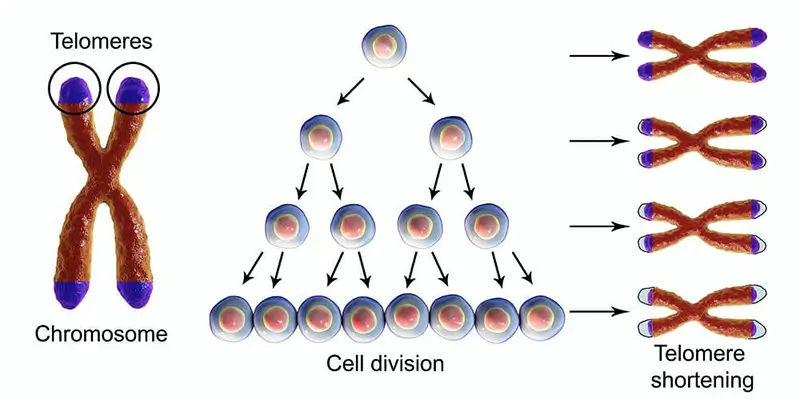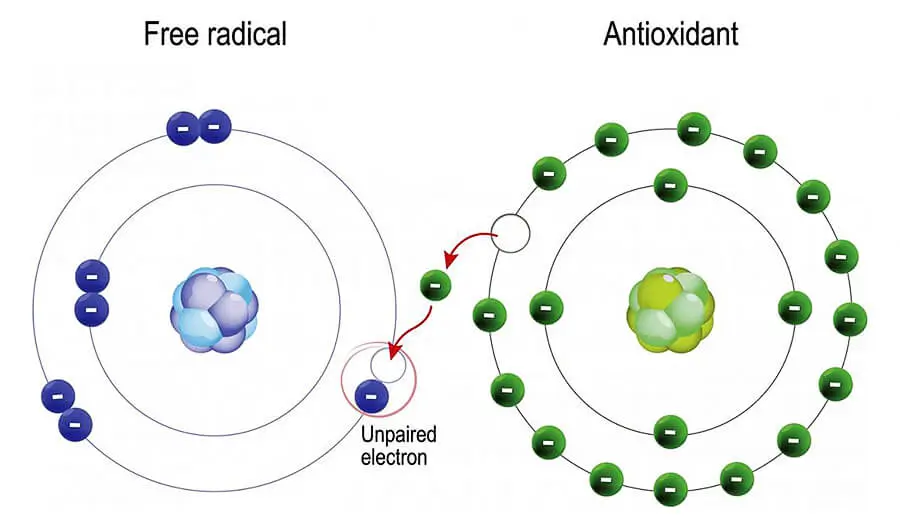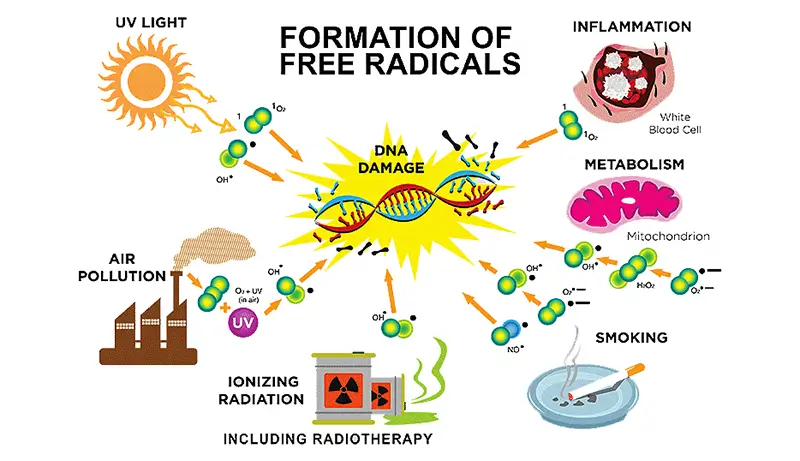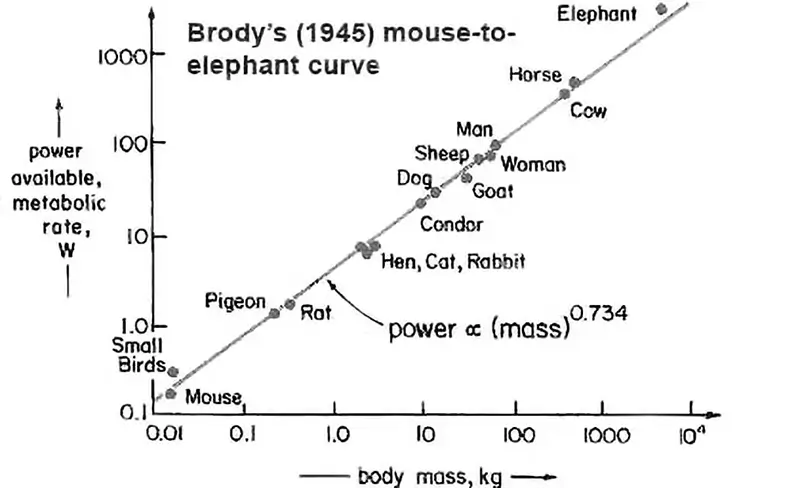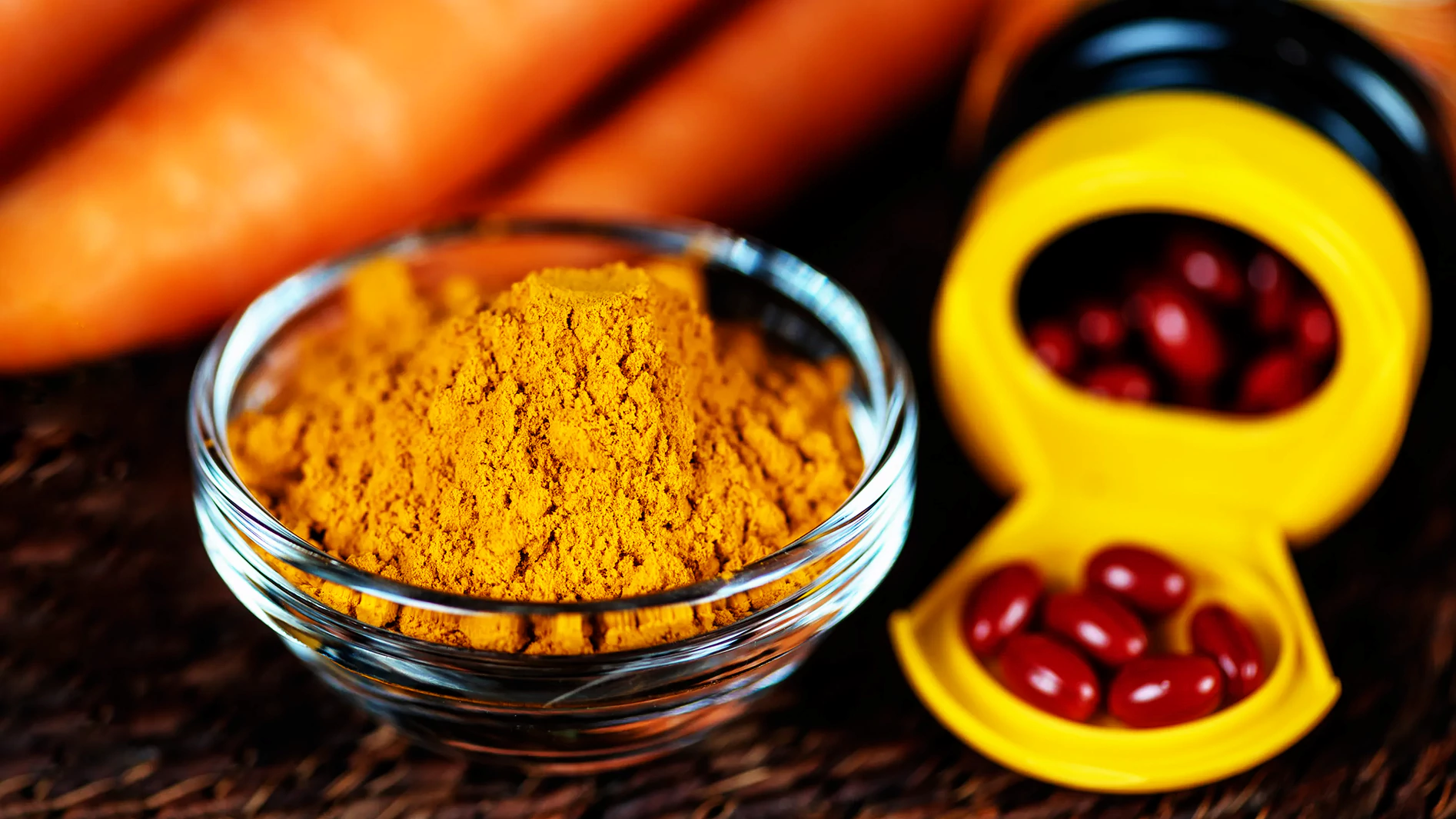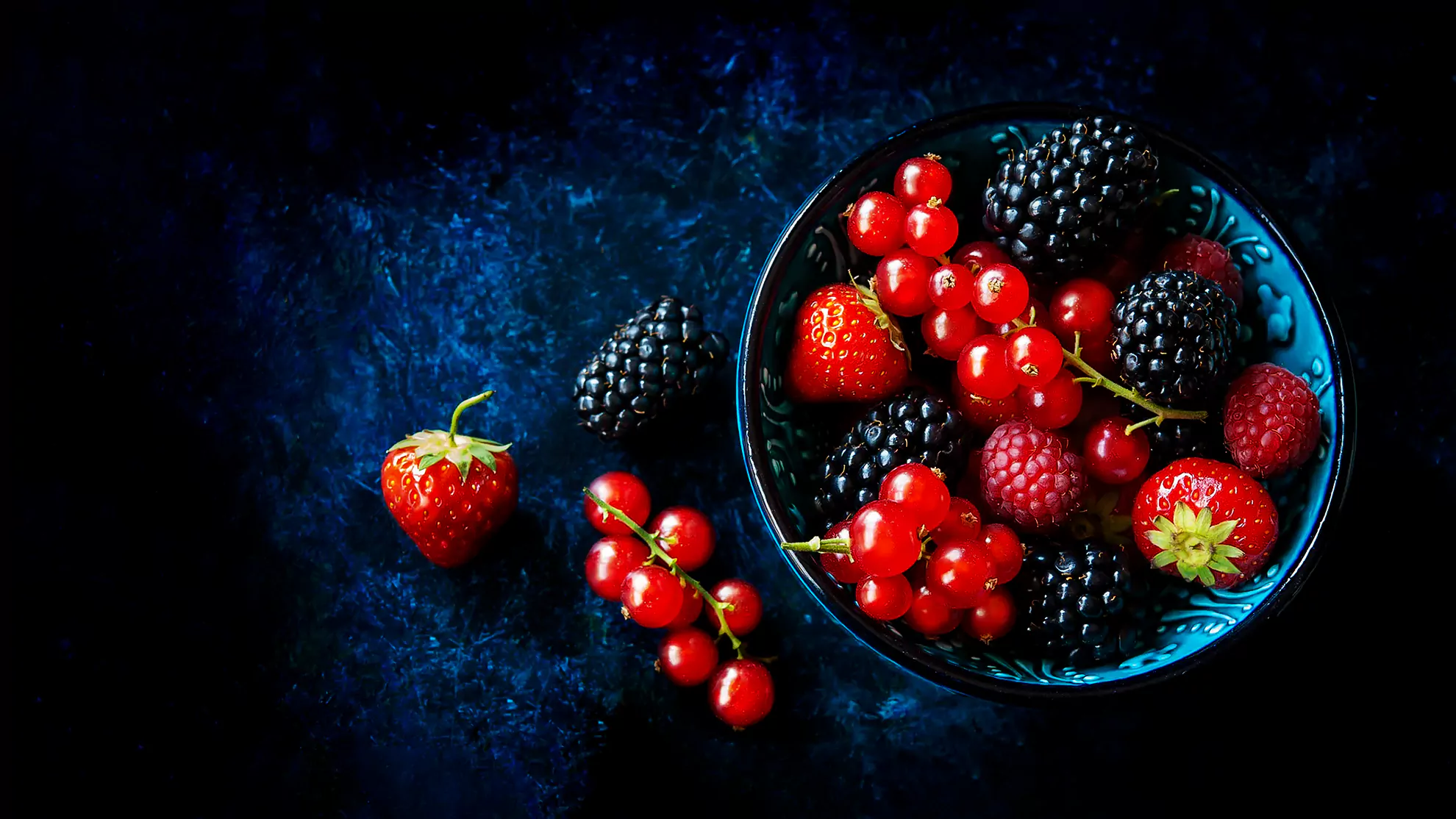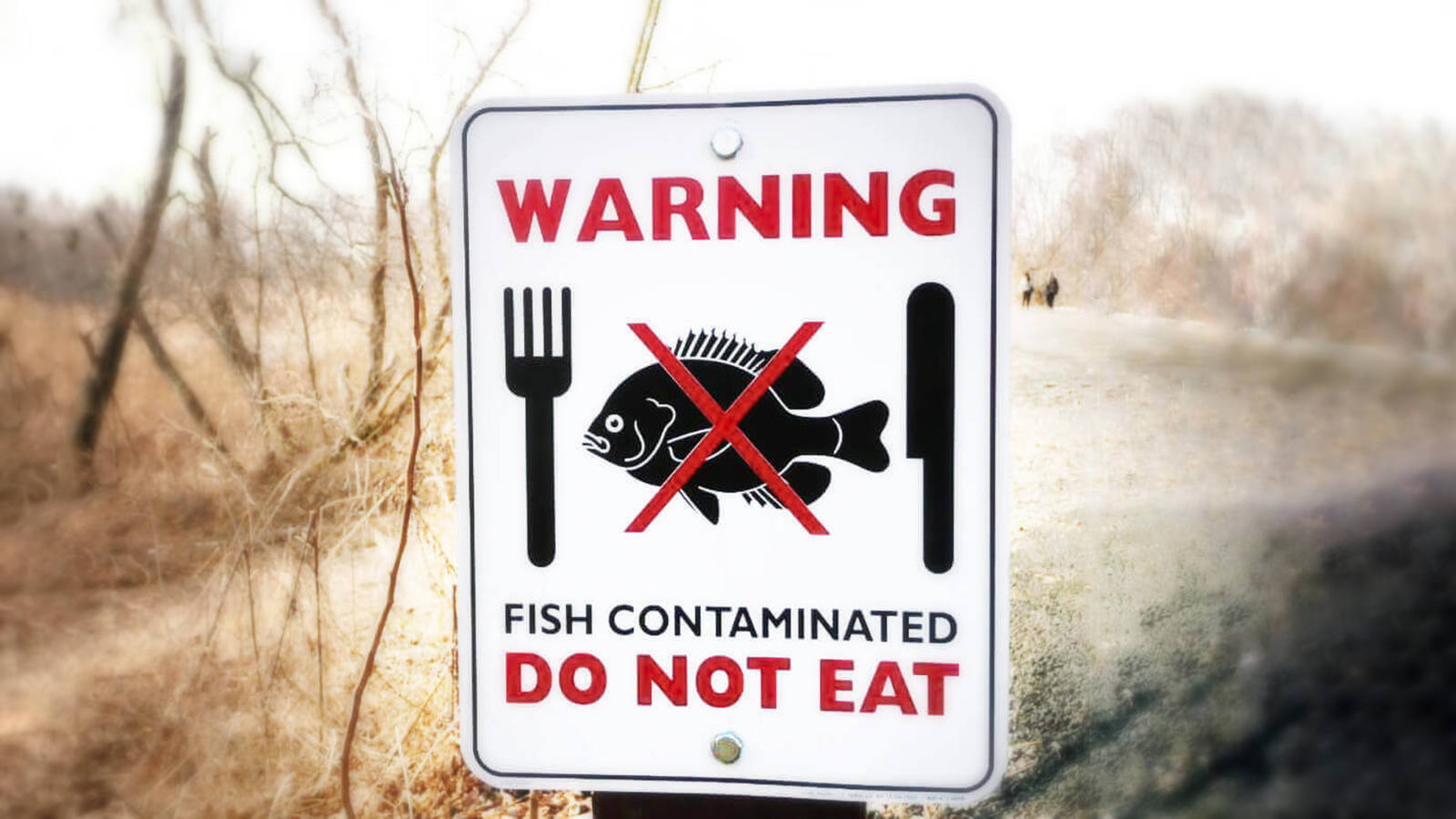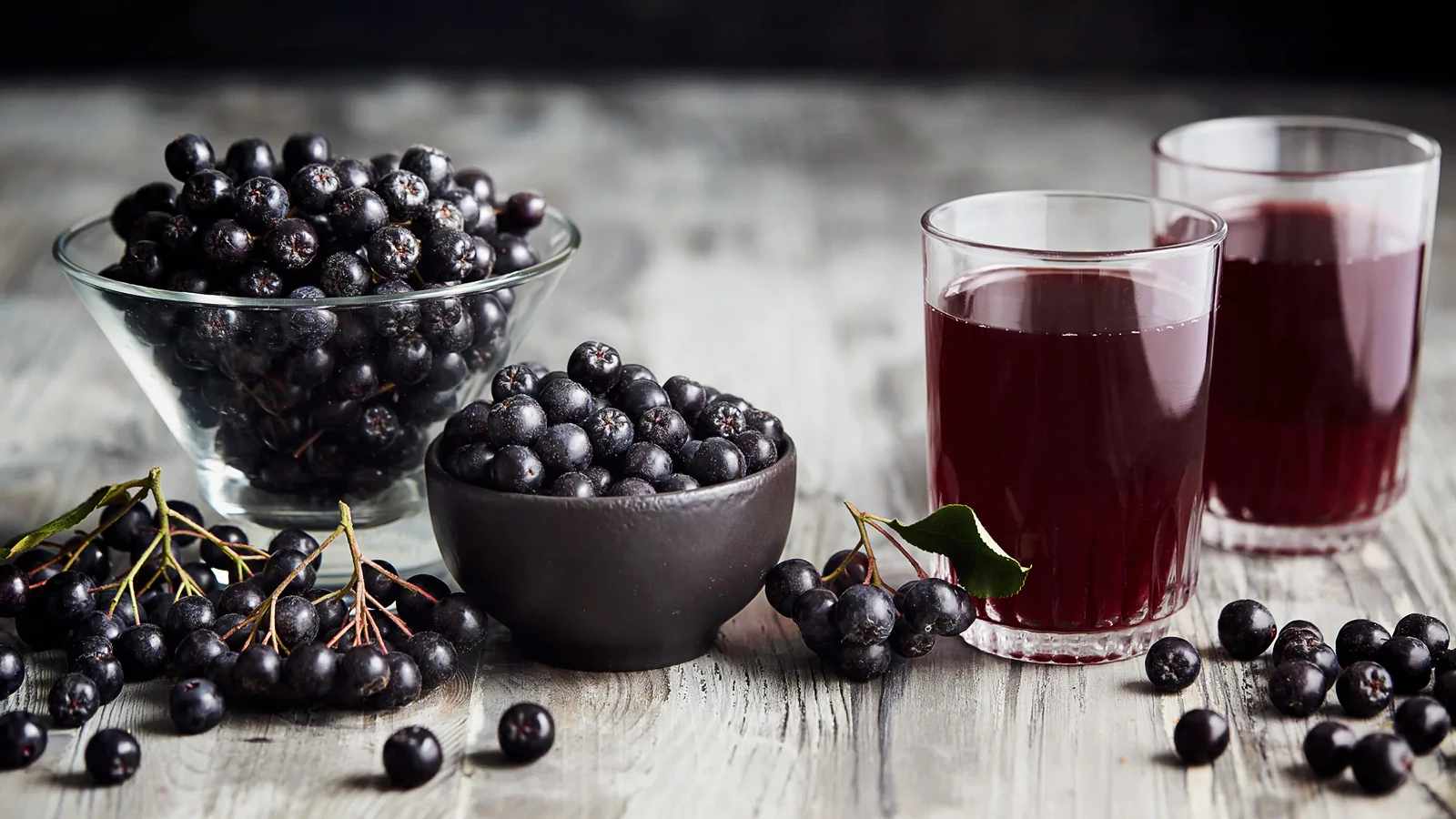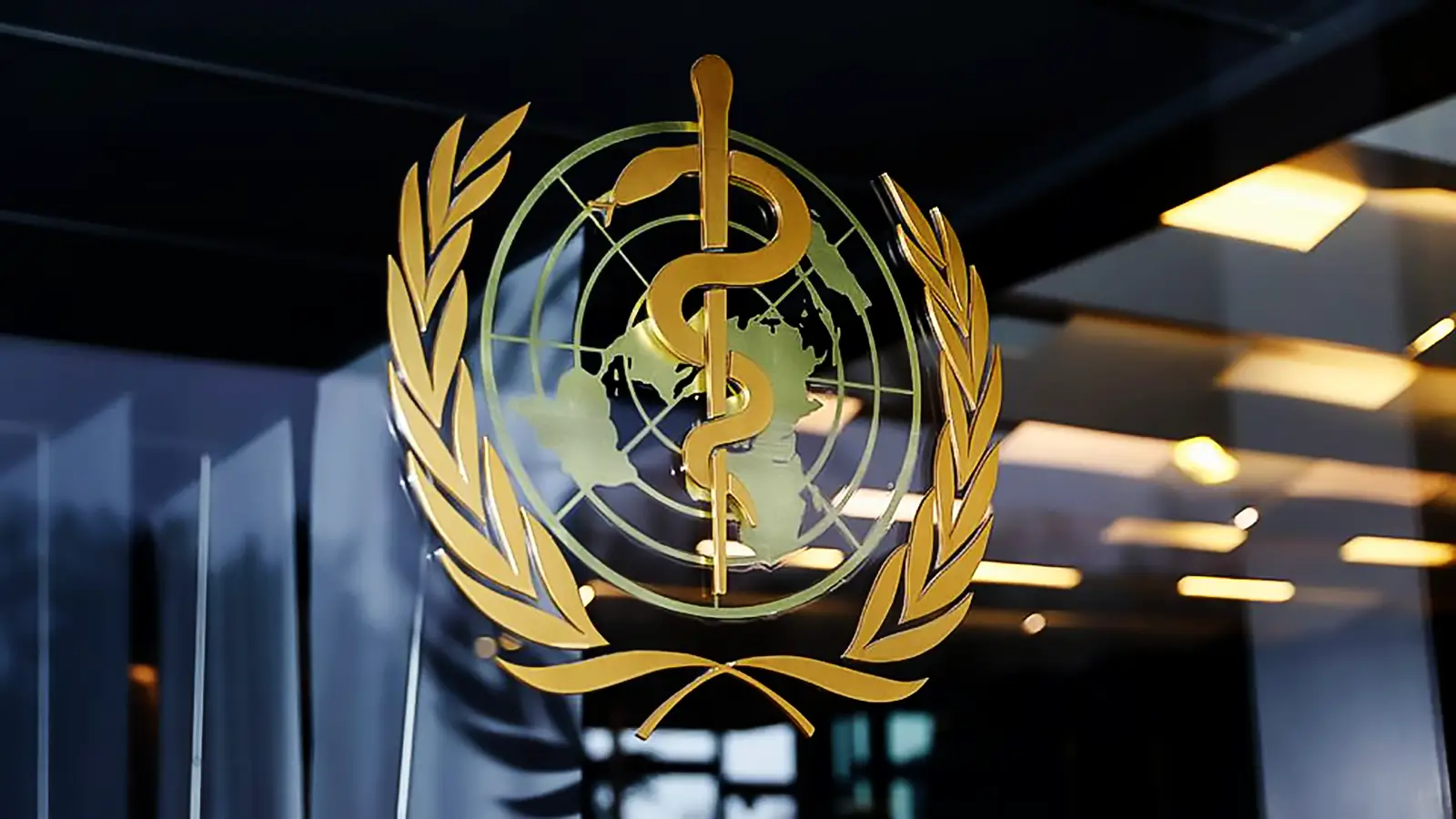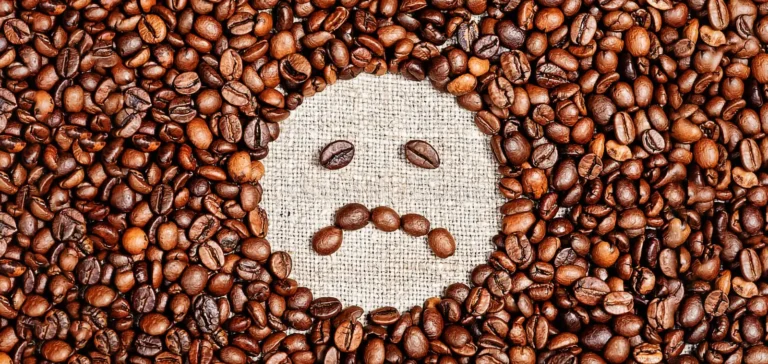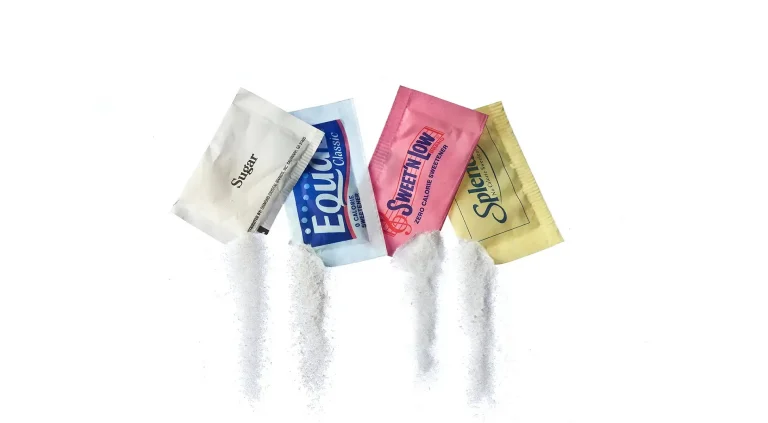Longevity: The Rate of Living Theory
The higher the metabolism, the higher the oxidative damage, and the higher the cell division. Every time cell divide it clips telomere in half and our longevity
Milos Pokimica
Written By: Milos Pokimica
Medically Reviewed by: Dr. Xiùying Wáng, M.D.
Updated June 9, 2023What happens when our regular metabolism burns energy for life? Well, some of that energy escapes and does damage to DNA decreasing our longevity. Some of the damaged cells naturally end their life cycle and die. In their place come new ones from the division.
The higher the metabolism, the higher the damage, and the higher the division.
Every time a cell divide it clips the telomere in half. A telomere is a small area of repeated nucleotide sequences at each end of a chromosome.
The purpose of the telomere is to keep the end of the chromosome from deterioration or fusion with other neighboring chromosomes. During chromosome duplication, the enzymes that duplicate DNA can maintain their duplication unit at the end of a chromosome. What happens is that in each duplication, the end of the chromosome is shortened. After too many divisions telomeres are gone, and there are no more divisions only death. It is a process called aging.
We can slow this process down and increase our longevity by slowing oxidative damage with high levels of antioxidants in the diet, and we can slow it down by increasing energy efficiency. The problem is that nothing in nature is 100% effective. Some of the oxygen in our cells escapes in the form of free radicals and do their oxidation elsewhere.
Oxidative stress happens when an oxygen molecule splits into single atoms with unpaired electrons. These aggressive molecules are called free radicals. They are so aggressive that they will attack the nearest stable molecule trying to steal its electron particle. When the attacked particle is left with no electron, it will become the free radical itself. The process is going to create a chain reaction. Once the process is started, the final result is the disruption of a living cell.
Free radicals are created as a part of normal metabolism.
Four different mechanisms produce endogenous (your body creates them) free radicals. The production of free radicals cannot be entirely stopped. It is surprisingly amusing to me that oxygen, an element indispensable for life is also responsible for our death.
It is not plausible to directly measure the number of free radicals in the body. The more fuel we burn, the faster we burn out.
Have you ever asked yourself how many heartbeats a common man has in their life?
It turns out each animal gets around a billion beats. Smaller animals have higher metabolic rates, and their heart is beating faster. When we calculate the number of beats for different sizes of different species of animals the magic number is one billion. Horses, rabbits, cats, pigs, elephants, whales, it does not matter, it is always one billion. Other than small dogs. They got the short end of the stick. In contrast, humans and chickens are champions in that we get more than double the usual natural number. Around 2.21 billion for us and 2.17 billion beats for chickens. The quicker your metabolism is the faster you will oxidase and the shorter your longevity.
It is called the rate of living theory. Max Rubner first proposed the concept in 1908. He observed that larger animals always outlived smaller ones and that the larger animals had slower metabolisms. A further affirmation was given to these observations by the discovery of Max Kleiber’s law in 1932. Kleiber assumed that basal metabolic rate could correctly be predicted by taking 3/4 the power of body weight.
This theory is colloquially known as the mouse-to-elephant curve. Support for this theory has been reinforced by studies linking a lower basal metabolic rate (evident with a lowered heartbeat) to increased life expectancy. Grand Tortoise can live up to 150 years. Hummingbirds have the highest metabolism of any homoeothermic animal. Their hearts beat at over 1263 beats per minute. At night, they enter a stupor, a form of deep sleep. In a stupor, their heart rate drops to 50 beats a minute to conserve energy. The average lifespan of a wild hummingbird is 3-10 years.
One species that stick out for longevity are Macaws. Birds in general average some 2 to 3 times the longevity of mammals. There are specific avian groups that are even longer-lived than this overall average. Why and how nobody knows. The interesting fact is that oxygen consumption in a unit of time in bird cells can go as high as 2.5 times that of mammals. If we combine this fact of high metabolic rate and oxygen consumption with the long lives of birds, we have unsolved scientific phenomena. If we calculate the numbers, we can see that some long-lived avian cells may be able to live as much as 20 times longer than some of the short-lived mammals such as mice, and five times that of regular long-lived mammals such as humans. If we find out how and what the secret is, we could possibly have five times life expectancy. Birds have evolved some protection against free radical damage. They have evolved some effective mechanisms for protection from the buildup of free radicals. The circumstances of those protective measures so far remain elusive. Longevity is a big topic in today’s scientific research.
Studies within those sectors of oxidative free radical protection have so far been restricted, and the evidence has been moderately conflicting. It will be significant in pharmaceutics, it already is. Universal strong antioxidant and calorie restriction pill, all we can eat and still have the benefits. There are multiple substances that undergo experiments within the pharmaceutical industry, for example, one substance is called Compound SRT1720. SRT1720 mimics dietary restriction, lessening many of the harmful effects of the high-fat diet and obesity with no signs of toxicity even after 80 weeks of treatment. We cannot buy this stuff yet.
What we can do is a dietary intervention in order to optimize our antioxidant intake. What we can have at present is something in the form of strong universal antioxidants like Astaxanthin, Curcumin, or MegaHydrate and increase our dietary intake of antioxidants from food. There is extensive research that is already available and optimizing our ORAC dietary intake levels is recommended to anyone especially in people that have some sort of inflammation and as a prevention from chronic diseases like cancer, aging, diabetes, cardiovascular disease, liver and kidney problems, neurodegenerative disorders (Neha et al., 2019).
There is no more debate on the list in the scientific field anymore about antioxidant intake. More research had to be done, especially to see if the high rate of dietary antioxidants had an adverse effect on immune cells that use the release of oxygen free radicals like macrophages. There is also evidence that antioxidants like beta-carotene can harm us if not taken in a whole food way. In the future, there will probably be much more research done in this area.
In one study that I will mention (Flanary et al., 2005) they analyzed one type of bristlecone pine, Pinus longaeva. It is the oldest known living eukaryotic organism, with the oldest on record turning 4780 years old in 2015. In this study, researchers did a detailed investigation of telomere length and telomerase activity. Telomerase is a ribonucleoprotein enzyme that adds a species-dependent telomere repeat sequence to the end of telomeres. It lengthens the telomeres. Some cells, not all of them can maintain telomere length by the action of this enzyme, thus keeping themselves from death. The conclusions of the research confirm the assumption that:
“Both increased telomere length and telomerase activity may directly/indirectly contribute to the increased life-span and longevity evident in long-lived pine trees (2000-5000 year life-spans).”
(Flanary et al., 2005)
In the future, we will have some t-pill maybe, but until that time we need to correct our lifestyle. Periodical fasting can be one way. It will help us as much as exercise and as much as a good diet.
However, who will actually do this? Ascetic monks. On a population scale, it is not sustainable, and actually, on a population scale, we see reverse action. For us, it is all about how to overcome our metabolism and calorie adaptation so that we can eat more, lose weight more quickly, and have six-pack abs and French fries at the same time. Many people describe dieting to be a 50% physiological battle and a 50% psychological battle, and they are not far off from the mark unless you can deal with the intensive food cravings you face. Most people on a diet are running a calorie deficit of around 500 calories below maintenance. After metabolic adaptation takes place, we can see how fast weight loss would go. Moreover, just around the corner are birthday parties, holidays, and of course, cheat meals. Eating for pleasure is nothing new.
References:
- Lints, F A. “The rate of living theory revisited.” Gerontology vol. 35,1 (1989): 36-57. doi:10.1159/000212998
- Brys, Kristel et al. “Testing the rate-of-living/oxidative damage theory of aging in the nematode model Caenorhabditis elegans.” Experimental gerontology vol. 42,9 (2007): 845-51. doi:10.1016/j.exger.2007.02.004
- Neha, Kumari et al. “Medicinal prospects of antioxidants: A review.” European journal of medicinal chemistry vol. 178 (2019): 687-704. doi:10.1016/j.ejmech.2019.06.010
- Flanary, Barry E, and Gunther Kletetschka. “Analysis of telomere length and telomerase activity in tree species of various life-spans, and with age in the bristlecone pine Pinus longaeva.” Biogerontology vol. 6,2 (2005): 101-11. doi:10.1007/s10522-005-3484-4
Related Posts
Do you have any questions about nutrition and health?
I would love to hear from you and answer them in my next post. I appreciate your input and opinion and I look forward to hearing from you soon. I also invite you to follow us on Facebook, Instagram, and Pinterest for more diet, nutrition, and health content. You can leave a comment there and connect with other health enthusiasts, share your tips and experiences, and get support and encouragement from our team and community.
I hope that this post was informative and enjoyable for you and that you are prepared to apply the insights you learned. If you found this post helpful, please share it with your friends and family who might also benefit from it. You never know who might need some guidance and support on their health journey.
– You Might Also Like –

Learn About Nutrition
Milos Pokimica is a doctor of natural medicine, clinical nutritionist, medical health and nutrition writer, and nutritional science advisor. Author of the book series Go Vegan? Review of Science, he also operates the natural health website GoVeganWay.com
Medical Disclaimer
GoVeganWay.com brings you reviews of the latest nutrition and health-related research. The information provided represents the personal opinion of the author and is not intended nor implied to be a substitute for professional medical advice, diagnosis, or treatment. The information provided is for informational purposes only and is not intended to serve as a substitute for the consultation, diagnosis, and/or medical treatment of a qualified physician or healthcare provider.NEVER DISREGARD PROFESSIONAL MEDICAL ADVICE OR DELAY SEEKING MEDICAL TREATMENT BECAUSE OF SOMETHING YOU HAVE READ ON OR ACCESSED THROUGH GoVeganWay.com
NEVER APPLY ANY LIFESTYLE CHANGES OR ANY CHANGES AT ALL AS A CONSEQUENCE OF SOMETHING YOU HAVE READ IN GoVeganWay.com BEFORE CONSULTING LICENCED MEDICAL PRACTITIONER.
In the event of a medical emergency, call a doctor or 911 immediately. GoVeganWay.com does not recommend or endorse any specific groups, organizations, tests, physicians, products, procedures, opinions, or other information that may be mentioned inside.
Editor Picks –
Milos Pokimica is a health and nutrition writer and nutritional science advisor. Author of the book series Go Vegan? Review of Science, he also operates the natural health website GoVeganWay.com
Latest Articles –
Top Health News — ScienceDaily
- This cancer-fighting molecule took 50 years to buildon December 22, 2025
MIT scientists have achieved the first-ever lab synthesis of verticillin A, a complex fungal compound discovered in 1970. Its delicate structure stalled chemists for decades, despite differing from related molecules by only two atoms. With the synthesis finally complete, researchers created new variants that showed strong activity against a rare pediatric brain cancer. The breakthrough could unlock an entire class of previously unreachable cancer-fighting molecules.
- A new drug could stop Alzheimer’s before memory loss beginson December 22, 2025
New research suggests Alzheimer’s may start far earlier than previously thought, driven by a hidden toxic protein in the brain. Scientists found that an experimental drug, NU-9, blocks this early damage in mice and reduces inflammation linked to disease progression. The treatment was given before symptoms appeared, targeting the disease at its earliest stage. Researchers say this approach could reshape how Alzheimer’s is prevented and treated.
- Why one long walk may be better than many short oneson December 22, 2025
How you walk may matter just as much as how much you walk. A large UK study tracking more than 33,000 low-activity adults found that people who grouped their daily steps into longer, uninterrupted walks had dramatically lower risks of early death and heart disease than those who moved in short, scattered bursts.
- Parkinson’s breakthrough changes what we know about dopamineon December 22, 2025
A new study shows dopamine isn’t the brain’s movement “gas pedal” after all. Instead of setting speed or strength, it quietly enables movement in the background, much like oil in an engine. When scientists manipulated dopamine during movement, nothing changed—but restoring baseline dopamine levels made a big difference. The finding could reshape how Parkinson’s disease is treated.
- A traditional Brazilian plant shows unexpected strength against arthritison December 22, 2025
A Brazilian study has confirmed that Joseph’s Coat, a plant used for generations in folk medicine, can significantly reduce inflammation and arthritis symptoms in lab tests. Researchers observed less swelling, healthier joints, and signs of tissue protection. Just as important, the extract showed a promising safety profile at tested doses. The discovery could pave the way for new plant-based anti-inflammatory treatments.
- Study links full-fat cheese to lower dementia riskon December 22, 2025
Eating full-fat cheese and cream may be associated with a lower risk of dementia, according to a large study that tracked people for more than 25 years. Those who consumed higher amounts of these foods developed dementia less often than those who ate little or none. Interestingly, low-fat dairy products did not show the same pattern. Researchers caution that the findings show an association, not cause and effect.
- Science says we’ve been nurturing “gifted” kids all wrongon December 21, 2025
A major international review has upended long-held ideas about how top performers are made. By analyzing nearly 35,000 elite achievers across science, music, chess, and sports, researchers found that early stars rarely become adult superstars. Most world-class performers developed slowly and explored multiple fields before specializing. The message is clear: talent grows through variety, not narrow focus.
PubMed, #vegan-diet –
- Comparing diet-related attitudes, perceptions, and behaviors of vegan and omnivorous adults: results from a cross-sectional survey study in Germanyon December 22, 2025
CONCLUSION: The findings are consistent with and build on existing research on cognitive and behavioral patterns related to a vegan diet, while at the same time yielding some additional insights. In particular, the results on significant differences in the risk-benefit perception of a vegan diet, as well as on motivations and influences regarding the decision to follow a vegan diet provide an important basis for the development of public health interventions and a foundation for further […]
- Assessment of vitamin A, vitamin B2, vitamin B12, vitamin K, folate, and choline status following 4 months of multinutrient supplementation in healthy vegans: a randomised,…on December 19, 2025
CONCLUSION: A multinutrient supplement containing 82 µg of vitamin B(12) per day significantly positively affected vitamin B(12) blood biomarkers in healthy vegans.
- Exploring the synergistic potential of pH and ultrasonication on the functional properties of pea and lentil protein isolates and its formulation in food producton December 15, 2025
The substitution of meat proteins with plant-based proteins from various sources is often motivated by nutritional considerations. However, the inherent limited solubility of plant proteins, which results in suboptimal techno-functional properties, remains a persistent challenge in food formulation. The purpose of this study was to utilize unique properties of pea (Pisum sativum L.) and lentil (Lens culinaris) through ultrasonication and pH variation in order to develop a stable and […]
- Healthful and Unhealthful Plant-Based Diets and Their Association with Cardiometabolic Targets in Women Diagnosed with Breast Cancer: A Cross-Sectional Analysis of a Lifestyle Trialon December 11, 2025
CONCLUSIONS: Maintaining cardiometabolic risk factors within normal ranges is clinically relevant in BCS, and this may be more likely when a plant-based diet is consumed, especially if low in unhealthy plant foods.
- Functional and Nutritional Properties of Lion’s Mane Mushrooms in Oat-Based Desserts for Dysphagia and Healthy Ageingon December 11, 2025
Hericium erinaceus (Lion’s Mane mushroom) is a medicinal species recognised for its neuroprotective and antioxidant properties. This study investigated its potential as a functional ingredient in oat milk-based desserts formulated for individuals with dysphagia. Freeze-dried Lion’s Mane powder (LMP), containing high-quality protein (~16%, amino acid score 88%), dietary fibre (~31%), and phenolic compounds (72.15 mg GAE/g), was incorporated at varying levels using gelatin or iota-carrageenan […]
Random Posts –
Featured Posts –
Latest from PubMed, #plant-based diet –
- Associations Between Healthy and Plant-Based Dietary Patterns and Cognitive Reserve: A Cross-Sectional Analysis of the 1946 British Birth Cohortby Kelly C Cara on December 23, 2025
CONCLUSIONS: CR was positively associated with healthy dietary patterns and inversely associated with unhealthful plant-based dietary patterns. Diet uniquely explained variations in CR and should be considered among influential lifestyle factors in future research. Longitudinal analyses are needed to confirm these findings.
- Dietary quercetagetin attenuates H2O2-induced oxidative damage and preserves meat quality in broilers by modulating redox status and Nrf2/ferroptosis signaling pathwayby Wenyue Hu on December 22, 2025
In modern poultry production, oxidative stress has emerged as a pivotal factor compromising the health status and overall performance of broiler. The aim of this study was to investigate the effects of dietary quercetagetin (QG) supplementation on hydrogen peroxide (H(2)O(2))-induced oxidative damage in breast muscle of broilers, focusing on growth performance, meat quality, and antioxidant function, and elucidating the underlying mechanisms. Two hundred and forty one-day-old Cobb broilers […]
- Effects of dietary selenium supplementation on physiological parameters, tissue fatty acid composition, and fatty acid-metabolism relative gene expression of grouper (Epinephelus coioides) fed high…by Yen-Chun Lee on December 22, 2025
The present study evaluated the effects of dietary selenium (Se) supplementation on growth performance, physiological responses, tissue fatty acid profiles, and the expression of genes related to fatty acid metabolism in juvenile grouper (Epinephelus coioides). A control diet based on soy protein concentrate, replacing 40% of the fish meal protein, was supplemented with graded levels of Se at 0, 0.3, 0.6, and 1.0 mg Se kg^(-1). A fish meal-based reference diet was also included for […]
- Unravelling the interaction between feeding regimens and milking time in Parmigiano Reggiano PDO milk: an integrated metabolomics and ion mobility lipidomics approachby Pier Paolo Becchi on December 22, 2025
In this study, an integrated approach based on UHPLC-HRMS metabolomics and IM-HRMS lipidomics has been carried out to unravel the interaction between feeding and milking time in the overall chemical profile of Parmigiano Reggiano (PR) milk. Specifically, ANOVA multiblock OPLS (AMOPLS) modelling revealed the complementarity of the assays in combining the effect of these two critical parameters. In particular, metabolomics highlighted the presence of plant-derived compounds (mainly terpenoids […]
- Comparing diet-related attitudes, perceptions, and behaviors of vegan and omnivorous adults: results from a cross-sectional survey study in Germanyby Dan Borzekowski on December 22, 2025
CONCLUSION: The findings are consistent with and build on existing research on cognitive and behavioral patterns related to a vegan diet, while at the same time yielding some additional insights. In particular, the results on significant differences in the risk-benefit perception of a vegan diet, as well as on motivations and influences regarding the decision to follow a vegan diet provide an important basis for the development of public health interventions and a foundation for further […]
- The effect of dietary interventions on peripheral markers of inflammation among people with multiple sclerosis: A systematic review and meta-analysis of randomized controlled trialsby Wade R Pingel on December 21, 2025
CONCLUSIONS: Several dietary interventions may reduce systemic inflammation in PwMS, with greater effects in longer-duration interventions. Calorie-restricted diets did not significantly alter adipokines. Given the limited number and heterogeneity of studies, larger and longer RCTs using comparable dietary interventions are needed to confirm these findings.
